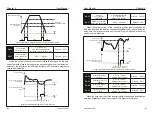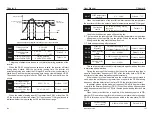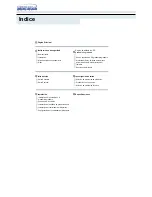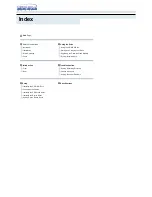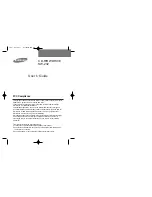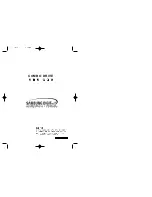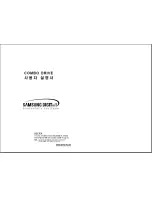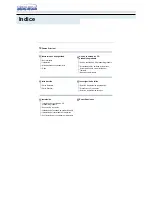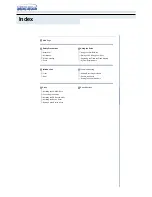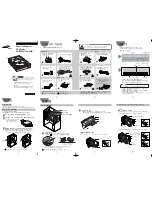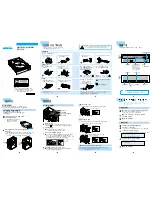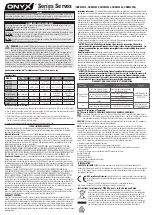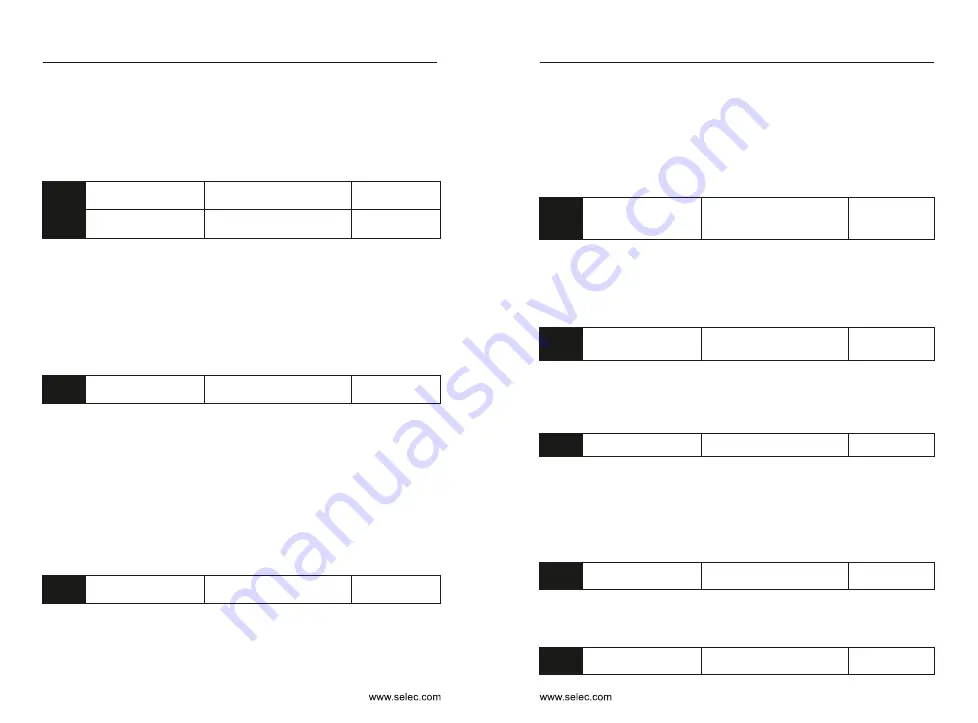
User Manual
152
User Manual
153
A0-07
Torque control
acceleration time
0.00s
〜
65000s
Default
:
0.00s
Torque control
deceleration time
0.00s
〜
65000s
Default
:
0.00s
A0-08
In the torque control mode, the difference between the motor output
torque and the load torque determines the speed change rate of the motor
and the load, so the motor speed may change rapidly, causing problems such
as excessive noise or mechanical stress. By setting the torque control
acceleration/deceleration time, the motor speed can be changed gently.
However, for situations where fast torque response is required, the torque
control acceleration/deceleration time must be set to 0.00 s.
A5: Control optimization parameter
DPWM switching
upper limit frequency
0.00Hz
〜
15.00Hz
Default
:
12.00
A5-00
Only valid for VF control. The wave-forming mode of the asynchronous
machine VF is determined. Below this value is the 7-segment continuous
modulation mode, and the opposite is the 5-segment intermittent modulation
mode.
Please refer to function code P3-11 for VF operation instability. For function
loss and temperature rise, please refer to function code P0-15.
In the case of 7-segment continuous modulation, the switching loss of the
inverter is large, but the current ripple is small; in the 5-segment intermittent
debugging mode, the switching loss is small and the current ripple is large;
but at high frequencies, it may cause The instability of the motor operation
generally does not need to be modified.
PWM Modulation
0: Asynchronous modulation
1: Synchronous modulation
Default
:
0
A5-01
Only valid for VF control. Synchronous modulation means that the carrier
frequency changes linearly with the output frequency conversion, ensuring
that the ratio (carrier ratio) of the two is constant, and is generally used when
the output frequency is high, which is beneficial to the output voltage quality.
Dead zone
compensation
mode selection
Default
:
1
A5-02
0: No compensation
1: Compensation mode 1
2: Compensation mode 2
This parameter generally does not need to be modified. Only when there
is a special requirement for the quality of the output voltage waveform, or
when the motor has an abnormality such as oscillation, it is necessary to try
to switch to select different compensation modes. Compensation mode 2 is
recommended for high power.
Random PWM depth
0
:
Invalid
1~10: Random PWM Depth
Default
:
0
A5-03
By setting a random PWM, the monotonous and harsh motor sound can
be softened and it can help reduce external electromagnetic interference.
When the random PWM depth is set to 0, the random PWM is invalid.
Adjusting the random PWM different depths will give different effects.
Fast current limiting
0
:
Invalid 1: Valid
Default
:
1
A5-04
Enable the fast current limiting function to minimize the overcurrent fault
of the inverter and ensure the uninterrupted operation of the inverter. If the
inverter continues to be in the fast current limit state for a long time, the
inverter may be damaged by overheating, etc. This situation is not allowed.
,
Therefore, when the inverter is quickly limited for a long time, it will alarm
Err40, indicating that the inverter is overloaded and needs to stop.
Current detection
compensation
0
〜
100
Default
:
0
A5-05
It is used to set the current detection compensation of the inverter. If the
setting is too large, the control performance may be degraded. Generally do
not need to be modified.
Under voltage setting
60.0%
〜
140.0%
Default
:
100.0%
A5-06
Chapter 6
Chapter 6
It is used to set the forward or reverse maximum running frequency of the
inverter under the torque control mode.
When the inverter torque is controlled, if the load torque is less than the
motor output torque, the motor speed will continue to rise. To prevent
accidents such as flying in the mechanical system, the maximum motor
speed during torque control must be limited.
At lower output frequencies (below 100 Hz), synchronous modulation is
generally not required because the ratio of carrier frequency to output
frequency is higher at this time, and the advantage of asynchronous
modulation is more obvious.
When the running frequency is higher than 85 Hz, the synchronous
modulation takes effect, and the frequency is fixed below the asynchronous
modulation mode.

